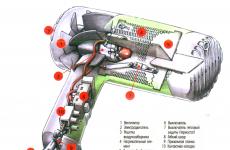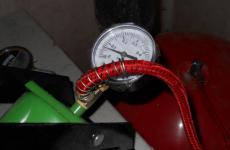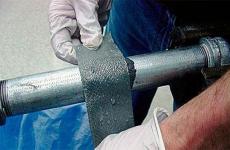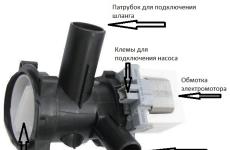The reasons for the pressure drop in the heating system of a double-circuit boiler. Types of problems and their elimination
For heating networks in private houses and apartments, it is advisable to use boilers with closed circulation of the coolant, i.e. double-circuit. This design allows you to increase the pressure of the working fluid in the circuit.
A high pressure in the heating system ensures safety and a higher boiling point of the heating medium, therefore, the economic effect of the installation increases, and a decrease in pressure leads to problems in the system. Therefore, we will analyze why the pressure in the heating system of a double-circuit boiler drops and how to raise it.
The control of the parameters of the boiler unit is carried out by measuring instruments - pressure gauges, main and additional. If the pressure gauge is to be included in the instrumentation and control measures, then models with electronic sensors are chosen.
Factors that affect the pressure inside the circuit:
- The impact of the coolant on the walls of the heating network elements;
- Height of pipe laying, suspension of radiators and boiler unit;
- Construction of the main sections of the pipeline.
The pressure value for autonomous heating is not standardized. The permissible values of the network parameters are calculated based on the data of a particular object taken:
- Boiler type, pipe characteristics (diameter, reinforcement, etc.), type and number of radiators;
- Place of equipment installation, length of the circuit;
- Number of storeys of the house;
- Parameters and condition of the external water conduit.
It's important to know! The head in the system is determined by the lowest indicator (usually at the most distant point). In the direct and return flow, the difference in pressure should be up to 0.3 ... 0.5 atm for the implementation of normal circulation of the working fluid.
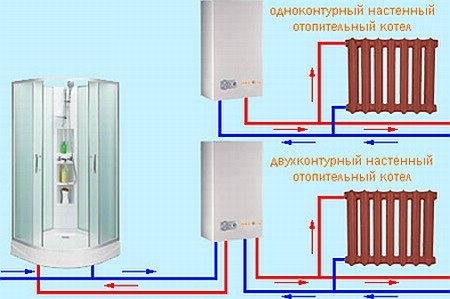
The reasons for the pressure drop in the circuit:
- The presence of leaks in the pipeline;
- Malfunction of the boiler, cracks on the surface of the heat exchanger;
- Disruption of the diaphragm valve, which is responsible for the safety of boiler equipment;
- Failure of the expansion tank membrane;
- Leakage of the hot water supply circuit.
The holes are determined visually by pumping water into the pipeline to a predetermined level, and the cycle is stopped. The most susceptible to leaks are the joints of pipes, valves, connections of radiators and the boiler itself.
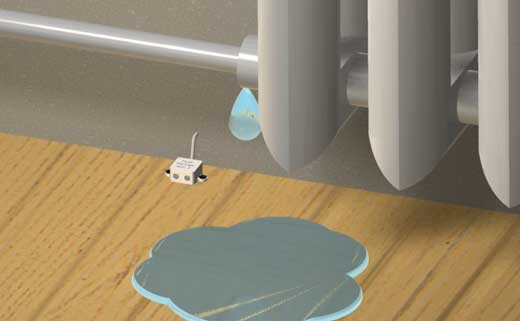
One of the reasons for the pressure drop is a leak at the junction of the pipe and radiator.
Leakage reasons:
- Corrosion on metal pipes and joints;
- Poor pipeline installation;
- Weakening of joints;
- Damage to the pipe due to mechanical stress.
Attention! Inspection of the network should be carried out several times per season. If there are no puddles on the floor, this does not guarantee that there will be no leaks. A quality check includes not only inspection, but also bypassing the pipes with a paper napkin.
Eliminating the problem
If the connection is damaged, replace the fitting or the connection itself. If a leak is detected (with a special scanner) in a pipe behind a decorative partition, wall or under the floor, it is necessary to dismantle the surfaces and make repairs.
Expansion tank and its pumping
In a closed system, the cause of a drop in the pressure in the circuit may be the failure of the expansion tank.
Symptoms of a problem:
- Frequent recharge of the system. If there is a need to additionally introduce a coolant into the system at least once a week, without visible leaks, then the problem lies in the incorrect operation of the expansion tank;
- The spread of the pressure gauge readings for different operating modes of the system. A sharp drop in the pressure of the coolant in the system when using hot water supply also indicates malfunctions in the RB.
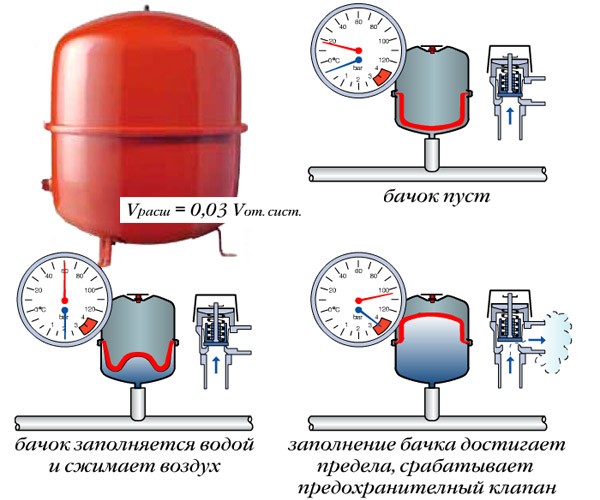
Pressure inside the expansion tank
To check the operability, it is necessary to pump the tank and check that the pressure in it corresponds to the pressure in the heating system.
The sequence of pumping actions:
- Close the stopcocks (direct and return water supply);
- Open the nozzle, drain the water until the pressure in the boiler equals zero;
- Take readings on the expansion tank in the “open” position of the union. Condensation on the RB should not be observed;
- Inject air with a pump in RB before liquid stops flowing from the union. Let the water drain out of the tank completely;
- Let the air out;
- Repeat the procedure, keeping the pressure in the RB at the level of 1.1 ... 1.3 bar;
- Open the shut-off valves;
- Run the coolant into the network. Set the pressure level to 1… 1.1 bar.
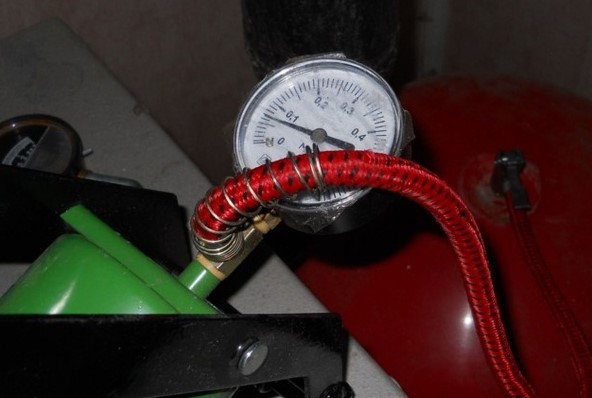
Air injection
In the absence of a special pump for RB, you can use a regular bicycle one.
Attention! Most manufacturers indicate the pressure on the air compartment in the equipment passport. This greatly simplifies the procedure for selecting an expansion tank for the boiler.
If there is no expansion tank
The expansion tank for the domestic heating network is the second most important element (after the boiler). Water, with a change in temperature, changes in volume. The volume inside the circuit is always constant, therefore, an expansion tank is additionally connected to the circuit, where excess coolant can be diverted, i.e. performs the function of a compensator. Consequently, RB is a safety device that prevents emergency situations - an increase in pressure, depressurization of pipes, etc.
The use of boiler equipment without an expansion tank is highly discouraged.
For stable operation, the pressure of the RB must correspond to the volume of the system, since when replacing radiators with pipes, the volume of the coolant must be increased. At the same time, too large RB will not maintain the operating pressure in the circuit.
The standard is an expansion tank, designed for 120 liters of heating medium in the circuit (typical two-room apartment). If the tank is too small, then the water will be discharged during heating and expansion through the safety valve. When the boiler is turned off, when the liquid temperature decreases, the boiler will not start up, because its volume, and, therefore, the head will be insufficient. In such cases, additional power supply is required.
Competent calculation of the heating system
In private houses, it is necessary to take responsibility for the choice of an expansion tank. If the volume is insufficient, and the system does not start up, there is a high probability of pipe freezing.
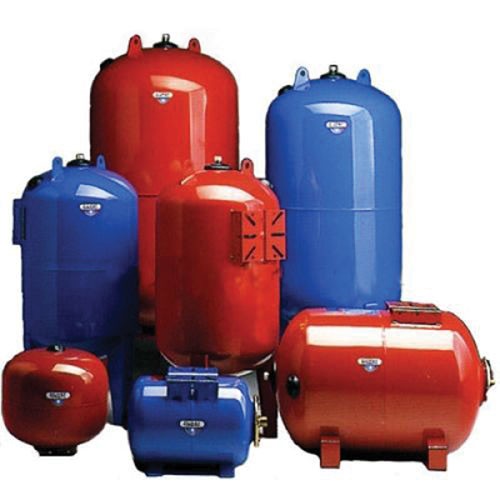
The installed equipment should be checked twice - immediately after installation and at the onset of the cold season (with a higher heating intensity).
Make-up tap
A common cause of pressure drop is a malfunctioning make-up valve. Causes:
- Loose valve connections. When opened, water will constantly go into the drain, causing a voltage drop;
- Additional make-up valve is open. This position of the shut-off valves causes constant fluctuations in the pressure of the coolant.

